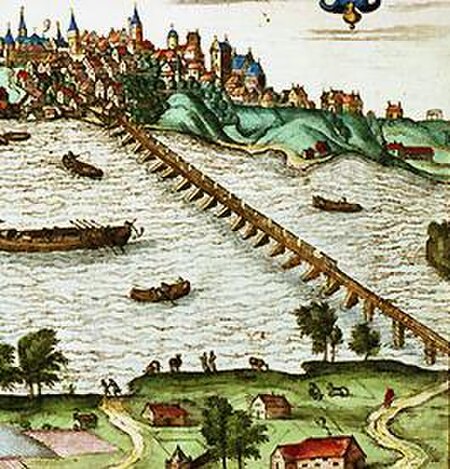Sigismund Augustus Bridge
1573 establishments in the Polish–Lithuanian CommonwealthBridges completed in 1573Bridges in Warsaw

The Sigismund Augustus Bridge was a wooden bridge over the Vistula River in Warsaw which came into operation in 1573 and lasted for 30 years. It was the first permanent crossing over the Vistula River in Warsaw and the longest wooden crossing in Europe at the time at 500 meters in length. The bridge was one of the greatest engineering works of the Polish Renaissance and one of the largest in Europe.
Excerpt from the Wikipedia article Sigismund Augustus Bridge (License: CC BY-SA 3.0, Authors, Images).Sigismund Augustus Bridge
Bulwar Jana Karskiego, Warsaw Śródmieście (Warsaw)
Geographical coordinates (GPS) Address Nearby Places Show on map
Geographical coordinates (GPS)
| Latitude | Longitude |
|---|---|
| N 52.253055555556 ° | E 21.016111111111 ° |
Address
Bulwar Jana Karskiego
Bulwar Jana Karskiego
00-301 Warsaw, Śródmieście (Warsaw)
Masovian Voivodeship, Poland
Open on Google Maps










